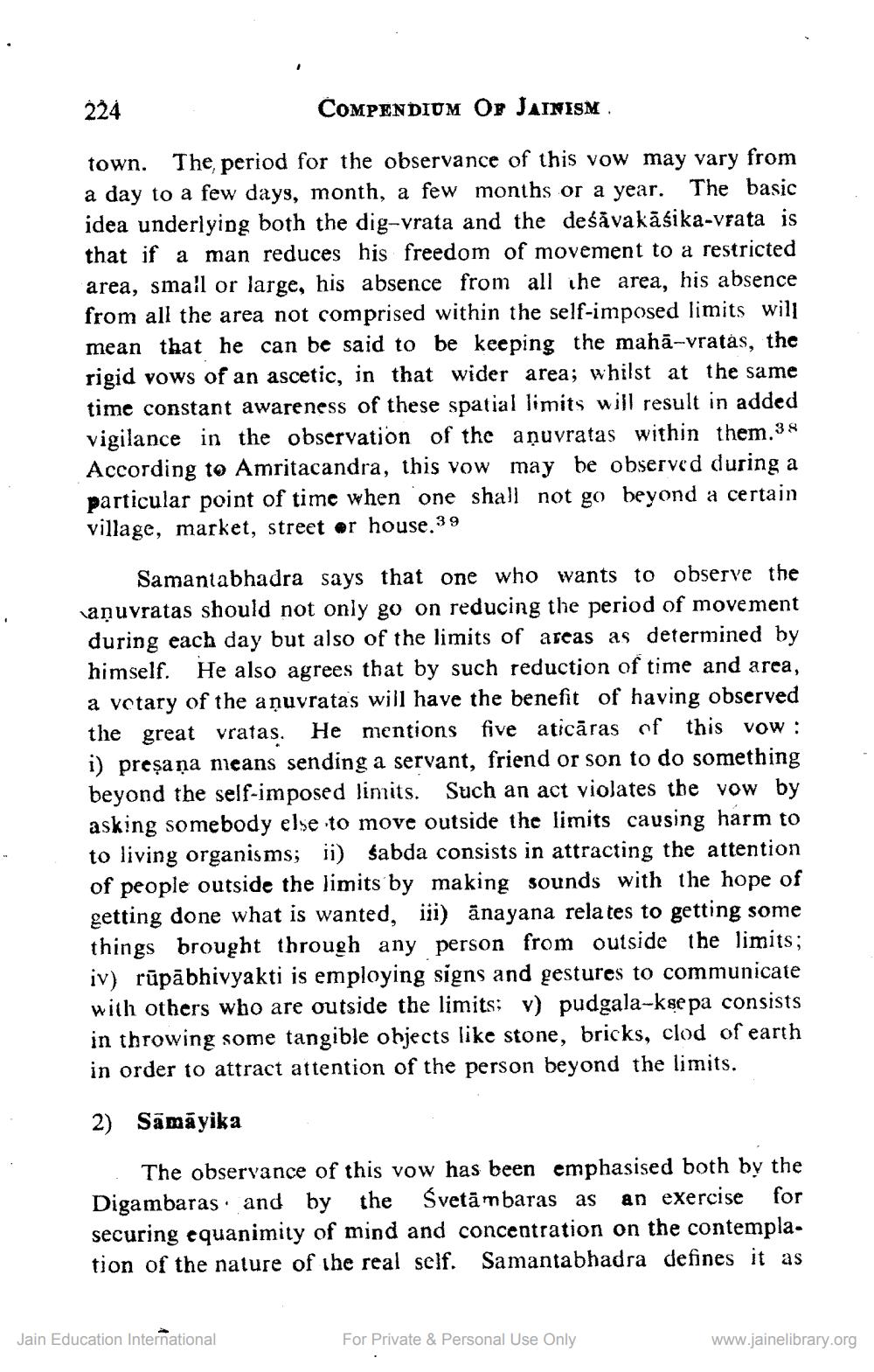________________
224
COMPENDIUM OF JAINISM.
town. The period for the observance of this vow may vary from a day to a few days, month, a few months or a year. The basic idea underlying both the dig-vrata and the desăvakāśika-vrata is that if a man reduces his freedom of movement to a restricted area, small or large, his absence from all the area, his absence from all the area not comprised within the self-imposed limits will mean that he can be said to be keeping the mahā-vratás, the rigid vows of an ascetic, in that wider area; whilst at the same time constant awareness of these spatial limits will result in added vigilance in the observation of the aņuvratas within them.38 According to Amritacandra, this vow may be observed during a particular point of time when one shall not go beyond a certain village, market, street ar house. 39
Samantabhadra says that one who wants to observe the aņuvratas should not only go on reducing the period of movement during each day but also of the limits of areas as determined by himself. He also agrees that by such reduction of time and area, a vetary of the aņuyratas will have the benefit of having o the great vratas. He mentions five aticāras of this vow : i) presa na nieans sending a servant, friend or son to do something beyond the self-imposed limits. Such an act violates the vow by asking somebody else to move outside the limits causing harm to to living organisms; ii) sabda consists in attracting the attention of people outside the limits by making sounds with the hope of getting done what is wanted, iii) ānayana relates to getting some things brought through any person from outside the limits; iv) rūpābhivyakti is employing signs and gestures to communicate with others who are outside the limits; v) pudgala-kse pa consists in throwing some tangible objects like stone, bricks, clod of earth in order to attract attention of the person beyond the limits.
2) Sāmāyika
The observance of this vow has been emphasised both by the Digambaras. and by the Svetämbaras as an exercise for securing equanimity of mind and concentration on the contempla. tion of the nature of the real self. Samantabhadra defines it as
Jain Education International
For Private & Personal Use Only
www.jainelibrary.org




